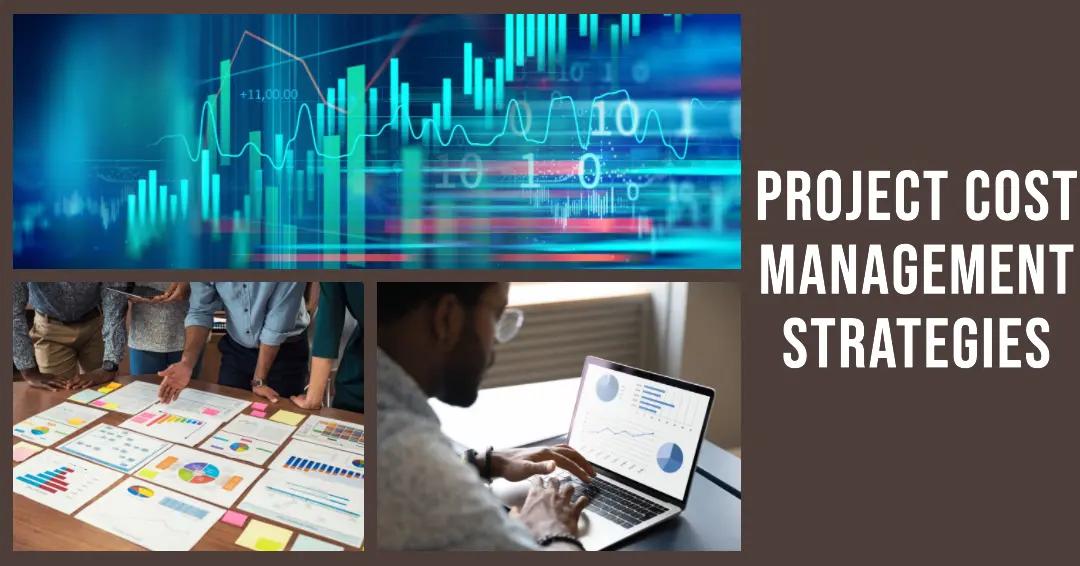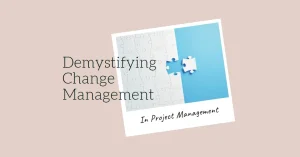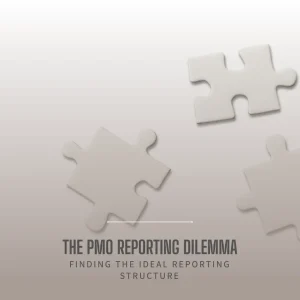I. Introduction
Hey there, fellow project managers and enthusiasts! Have you ever found yourself struggling to keep your project’s costs under control? Trust me, I’ve been there too. But fear not, because today we’re diving into the world of project cost management and exploring four fantastic strategies that can help you tackle those pesky budget overruns and keep your projects on track.
As we all know, cost management plays a crucial role in the success of any project. I mean, who doesn’t want to deliver a project within budget and avoid unpleasant surprises, right? That’s where our four project cost management strategies come into play: Plan Cost Management, Estimate Costs, Determine Budget, and Control Costs. Each of these strategies serves a unique purpose, and when used together, they create a powerful framework for effectively managing your project costs.
In this blog post, we’ll delve into the details of each strategy, discuss their benefits, and learn how to apply them to your projects. So grab your favorite cup of coffee, get comfortable, and let’s dive into the world of project cost management!
II. Plan Cost Management
First things first, let’s talk about Plan Cost Management. Just like planning a vacation or a dinner party, successful projects start with a solid plan. In this case, we’re focusing on the cost management aspect, which is all about creating a roadmap for handling project costs throughout its lifecycle.
A. Definition and purpose of Plan Cost Management
Plan Cost Management is the process of developing a framework that outlines how you’ll estimate, budget, and control your project’s costs. This step is essential because it sets the foundation for effective cost management and ensures that you and your team are on the same page when it comes to managing finances.
B. Key steps in developing a cost management plan
Ready to start planning? Here are some essential steps to develop a comprehensive cost management plan:
- Define the project scope: Clearly outline what’s included in your project and what isn’t. This will help you identify the necessary resources and avoid scope creep, which can lead to cost overruns.
- Identify project resources: List all the resources you’ll need for your project, such as team members, equipment, and materials. This will give you a better understanding of the costs associated with your project.
- Establish cost estimation approach: Choose the most suitable cost estimation techniques for your project. We’ll discuss these techniques in detail in the next section, so stay tuned!
- Set up cost performance measurement baseline: Establish a baseline to measure and monitor your project’s cost performance. This will help you identify deviations from the plan and take corrective actions when needed.
C. Benefits of having a comprehensive cost management plan
Now you might be wondering, “Why should I spend time developing a cost management plan?” Well, here’s why:
- It helps you make informed decisions about project costs and resources.
- It sets clear expectations for your team, stakeholders, and clients.
- It allows you to monitor and control costs effectively throughout the project lifecycle.
- It reduces the risk of cost overruns and helps you deliver the project within budget.
So there you have it, folks! Plan Cost Management is the first crucial step towards mastering project cost management. Stay with me as we delve deeper into the remaining strategies and unlock the secrets to effective cost management.
III. Estimate Costs
Now that we’ve got our cost management plan in place, it’s time to put on our fortune-teller hats and dive into the world of cost estimation. Estimating costs accurately is a vital part of project cost management, as it helps you set realistic budgets and allocate resources efficiently.
A. Definition and purpose of Estimate Costs
Estimate Costs is the process of predicting the financial resources required to complete your project. The goal here is to come up with an accurate approximation of the total costs involved in executing the project, taking into consideration factors such as labor, materials, equipment, and contingencies.
B. Different cost estimation techniques
As promised, let’s explore some popular cost estimation techniques you can use to make your predictions as accurate as possible:
- Analogous estimation: This technique involves using historical data from similar past projects to estimate costs for your current project. It’s a quick and easy method, but its accuracy depends on how closely your project resembles the past projects you’re referencing.
- Parametric estimation: With this technique, you use statistical data and mathematical formulas to estimate costs based on project-specific parameters. It’s more accurate than analogous estimation but requires a good amount of reliable data to work with.
- Bottom-up estimation: This approach involves breaking down your project into smaller tasks, estimating the costs for each task, and then summing up the individual costs to determine the overall project cost. This method is time-consuming but often yields the most accurate results.
- Expert judgment: Sometimes, it’s best to consult experts in the field who have experience with similar projects. Their insights can help you come up with a well-informed cost estimate.
C. The importance of accuracy in cost estimation
You might be wondering, “Why is it so important to be accurate when estimating costs?” Well, let me tell you:
- Accurate cost estimates help you set realistic budgets and manage stakeholder expectations.
- They reduce the risk of cost overruns and project delays.
- They enable you to allocate resources efficiently, leading to better project performance.
So there you have it, friends! Estimating costs is a critical aspect of project cost management that helps you pave the way for smooth project execution. Stay tuned, because next up, we’ll tackle the art of determining your project budget!
IV. Determine Budget
Great job so far! We’ve planned our cost management strategy and estimated our project costs. Now it’s time to roll up our sleeves and dive into the nitty-gritty of determining our project budget. This step is crucial because it consolidates all the cost estimates and reserves into a single number – the budget, which sets the financial baseline for your project.
A. Definition and purpose of Determine Budget
Determine Budget is the process of aggregating your project’s cost estimates and reserves to establish an authorized and approved budget. It serves as a guiding light for your project’s financial performance, allowing you to track and control costs throughout the project lifecycle.
B. Key steps in creating a project budget
Ready to establish your project’s financial foundation? Here are the key steps to create an effective project budget:
- Aggregate cost estimates: Compile all the cost estimates from the previous step and sum them up to arrive at the total estimated project cost. Don’t forget to include all direct and indirect costs!
- Apply contingency reserves: Add contingency reserves to your budget to account for potential uncertainties or risks. These reserves will act as a financial buffer, helping you navigate unforeseen expenses without derailing your project.
- Validate and approve the budget: Review your proposed budget with stakeholders, clients, and team members to ensure it aligns with project objectives and scope. Once everyone is on board, get the necessary approvals to finalize your budget.
C. How to manage budget revisions and changes
Let’s face it: Projects can be unpredictable, and you may need to revise your budget as circumstances change. Here’s how to manage budget revisions and changes effectively:
- Monitor project progress and compare actual costs against the budget regularly.
- Identify potential budget deviations early on and take corrective actions as needed.
- Communicate budget changes transparently with your team and stakeholders to maintain trust and ensure everyone stays informed.
And there you have it! Determining your project budget is an essential step in project cost management, setting the stage for tracking and controlling costs. In our final section, we’ll explore how to maintain control over your project’s finances and ensure a successful outcome. Stay with me!
V. Control Costs
We’ve made it to the final piece of the project cost management puzzle: Control Costs. This is where we put all our hard work into action and ensure that our project stays on track financially. Let’s explore how to master the art of cost control and bring our projects to a successful and budget-friendly conclusion.
A. Definition and purpose of Control Costs
Control Costs is the process of monitoring your project’s financial performance, comparing it against the established budget, and taking corrective actions when needed to keep costs in check. The goal here is to maintain control over your project’s finances and avoid unpleasant surprises that could jeopardize its success.
B. Tools and techniques for cost control
To keep a close eye on your project’s financial health, consider using these popular cost control tools and techniques:
- Earned Value Management (EVM): EVM is a powerful project management technique that combines scope, time, and cost data to measure your project’s performance and progress. It helps you identify deviations from the plan and determine whether corrective actions are necessary.
- Variance analysis: By comparing your project’s actual costs against the budget, you can identify variances and determine their root causes. This will enable you to make informed decisions about whether to adjust your project plan or take corrective actions.
- Trend analysis: This technique involves examining your project’s financial performance over time to identify trends and patterns. By spotting potential issues early on, you can take proactive measures to keep your project on track financially.
- Performance reviews: Regularly review your project’s financial performance with your team and stakeholders. This ensures everyone stays informed and accountable, and it helps identify opportunities for improvement.
C. The importance of cost control for project success
So, why is cost control such a big deal for project success? Here’s why:
- It helps you maintain alignment with your project’s financial objectives and constraints.
- It enables you to identify and address budget deviations early on, reducing the risk of cost overruns.
- It fosters transparency and accountability within your team, leading to better financial decision-making.
Congratulations, friends! We’ve covered all four project cost management strategies, and you’re now equipped with the knowledge and tools to manage your project’s finances like a pro. Let’s wrap things up with a quick recap and a call to action.
VI. Conclusion
Wow, what a journey we’ve been on together! We’ve explored the ins and outs of the four project cost management strategies: Plan Cost Management, Estimate Costs, Determine Budget, and Control Costs. By understanding and implementing these strategies, you’re setting yourself up for project cost management success.
Let’s recap what we’ve learned:
- Plan Cost Management: Develop a comprehensive framework for estimating, budgeting, and controlling your project costs.
- Estimate Costs: Predict the financial resources required for your project using a range of cost estimation techniques.
- Determine Budget: Aggregate cost estimates and reserves to establish an approved project budget that serves as a financial baseline.
- Control Costs: Monitor and manage your project’s financial performance, taking corrective actions when needed to keep costs in check.
With these strategies in your project management toolkit, you’ll be better equipped to deliver projects within budget and manage costs effectively. So, what are you waiting for? Start applying these cost management strategies to your projects today and experience the difference they can make!
Remember, mastering project cost management takes time and practice, but with persistence and dedication, you can become a cost management superstar. Keep learning, keep improving, and most importantly, keep pushing forward in your project management journey. Good luck, and here’s to your success in managing project costs!
To find out how Artificial Intelligence is changing the Project Management landscape, you have enjoy reading this article https://www.shaunstoltz.com/did-artificial-intelligence-just-change-everything-about-project-management/
Find out more about Shaun Stoltz https://www.shaunstoltz.com/about/
This post was written by an AI and reviewed/edited by a human.



